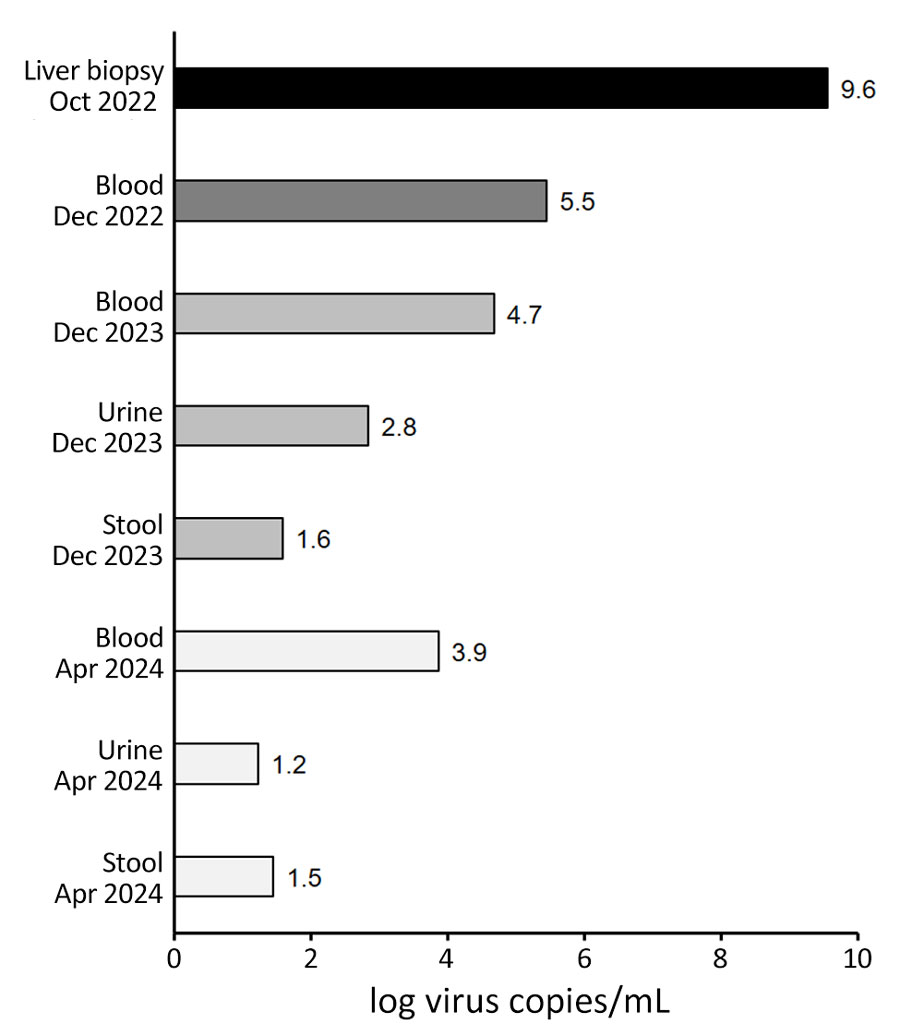Volume 30, Number 10—October 2024
Dispatch
Circovirus Hepatitis in Immunocompromised Patient, Switzerland
Figure 4

Figure 4. Human circovirus 1 viral loads in recently collected and archival samples (2023 and 2024) compared with viral load in initial liver biopsy (2022) from a hepatitis patient, Switzerland. Virus copies and log virus copies were also tabulated (Appendix Table 3).
1These first authors contributed equally to this article.
2These senior authors contributed equally to this article.
Page created: August 13, 2024
Page updated: September 23, 2024
Page reviewed: September 23, 2024
The conclusions, findings, and opinions expressed by authors contributing to this journal do not necessarily reflect the official position of the U.S. Department of Health and Human Services, the Public Health Service, the Centers for Disease Control and Prevention, or the authors' affiliated institutions. Use of trade names is for identification only and does not imply endorsement by any of the groups named above.